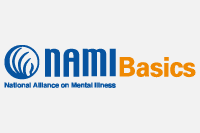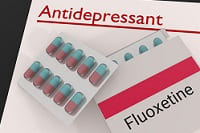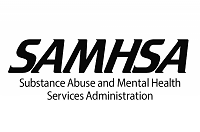
Early Intervention for Psychosis Associated with Reduced Health Costs Over Time
Feb 23 2022
Early intervention has been shown to improve outcomes for individuals with psychosis, and new research suggests the strategy has economic advantages as well. Researchers found that early intervention treatment after an initial psychotic episode reduced health care costs by more than $50,000 per quality-adjusted life year, and individuals experienced fewer hospitalizations and more years of employment. Investing in timely, targeted mental health care is not only critical to individual well-being, but economically worthwhile for individuals and the health care system overall. To learn more, see the study in Psychiatric Services.

Pandemic may be Linked with Inflammatory Brain Markers, Mood Changes
Feb 16 2022
Many people have felt the mental health effects of the COVID-19 pandemic, and new research indicates that even individuals who never contracted the illness may experience stress-related changes in brain function. Researchers used brain imaging and other health metrics to compare “pre-pandemic” and “pandemic” data for individuals who tested negative for SARS-CoV-2 antibodies. Even in these healthy individuals, the data showed elevated levels of inflammatory markers associated with mood issues and fatigue following 2020 lockdown measures. To learn more, see the study in Brain, Behavior, and Immunity, and take a look at NAMI’s Mental Health by the Numbers for additional information on the pandemic’s impact on mental health.

Specific Combination Antidepressant Therapies may be Safe and Effective for Acute Depression
Feb 16 2022
For individuals with depression, multiple antidepressants may be prescribed if the person is not experiencing enough benefit from a single medication. In a recent systematic review and meta-analysis, researchers explored findings from nearly 40 previous studies to assess the tolerability and efficacy of combination therapy compared to monotherapy. Combination treatment was found to offer improved outcomes not only for individuals who did not respond to monotherapy, but also as a first-line treatment in some patients. The researchers also found that certain medication combinations were more effective than others, suggesting that combining any two antidepressants may not provide similar benefits. To learn more, see the study in JAMA.

Mobile Phone-Based Mental Health Interventions Show Positive – but Modest – Results
Jan 18 2022
Mobile phone-based mental health interventions have gained popularity as a potential solution to the cost and access issues of traditional mental health care. A new study analyzed previous research on such interventions, including 145 studies involving 48,000 participants, to determine whether they benefit users as designed. Overall, the study found modest positive results for certain conditions – such as anxiety and depression – but little evidence that mobile-phone based interventions are as effective or more effective than traditional care. More rigorous studies, including a full exploration of potential negative outcomes, are necessary to understand the impact of these interventions. To learn more, see the study in PLOS Digital Health.

Randomized Controlled Trial finds NAMI Basics Effective for Caregivers of Children with Mental Health Symptoms
Jan 18 2022
NAMI Basics is a no-cost education program for parents, caregivers and others who provide care for youth experiencing mental health symptoms. For the first time, the effectiveness of NAMI Basics was tested using a randomized controlled study design. Caregivers were randomly assigned to either a 6-week, peer parent-led NAMI Basics course, or an 8-week waitlist. At the end of the study, caregivers participating in the NAMI Basics course showed increased engagement with their child’s symptoms and intentions to seek out services compared with the waitlist group. Participating caregivers also reported decreased intrapersonal and interpersonal distress among their children. To learn more, see the study in Psychiatric Services.

Access to Gender-Affirming Hormone Therapy Associated with Better Mental Health Outcomes Among Transgender Adults
Jan 12 2022
Transgender individuals often face significant mental health challenges, including a higher risk of suicide compared to their cisgender peers. In a recent analysis of data from the 2015 U.S. Transgender Survey, researchers explored the link between receiving gender-affirming hormone therapy (GAH) in adolescence or adulthood and future mental health outcomes. Among adults who indicated that they had ever desired GAH, those who had received it at any point in their life were less likely to report suicidal behavior in the past year or severe psychological distress in the past month. Further, those who received GAH in adolescence (age 14-17) experienced better mental health outcomes than those who received GAH in adulthood. To learn more, see the study in PLOS One.

Type 2 Diabetes Common in Individuals with Mental Health Conditions
Nov 29 2021
Individuals with mental illness often have additional physical health challenges, due to the side effects of some psychiatric medications and other lifestyle factors. According to a new analysis of more than 30 systematic reviews, type 2 diabetes – which affects about 10% of the general population – is common among people with psychiatric conditions. Researchers found that 16% of individuals with a substance use disorder also have type II diabetes, followed by 14% of those with an anxiety disorder, 11% each of those with bipolar disorder or psychosis, and 10% of those with schizophrenia. To learn more, see the study in Diabetologia.

SSRI Antidepressants May Reduce Severity of COVID-19 Infection
Nov 15 2021
New research supports previous findings that selective serotonin reuptake inhibitors (SSRIs), a type of antidepressant medication, are associated with decreased mortality in patients with COVID-19. Using electronic health records from a population of more than 80,000 people diagnosed with COVID-19, researchers compared patients prescribed SSRIs with similar patients not treated with SSRIs. Relative risk of mortality was reduced for individuals taking any SSRI, those taking fluoxetine, and those taking either fluoxetine or fluvoxamine. Patients taking a specific SSRI other than fluoxetine or fluvoxamine did not experience statistically significant reductions in mortality risk. To learn more, see the study in JAMA.

Cannabis Use Disorder, Depression and Anxiety Increasing in Prenatal Hospitalization
Nov 03 2021
Cannabis use disorder (CUD) among individuals hospitalized during pregnancy increased significantly between 2010-2018, and this population may also be at an elevated risk for other psychiatric illnesses. Among a sample of nearly 21 million prenatal hospitalization records, 2% involved a pregnant individual with a diagnosis of CUD in 2018, compared to 0.8% in 2010. Pregnant women with CUD were also more likely to experience co-occurring depression or anxiety. Further research is needed to better understand the relationship between the use of cannabis and mental illness – especially among vulnerable populations such as pregnant women – and how targeted interventions can improve health outcomes. To learn more, see the study in JAMA.

SAMHSA Releases 2020 National Survey on Drug Use and Health
Oct 25 2021
This month, SAMHSA released results from the 2020 National Survey on Drug Use and Health (NSDUH), an annual nationwide survey on mental health, substance use, treatment rates, and more. The report shows increased prevalence of mental illness and substance use disorders (SUDs) among U.S. adults during 2020, consistent with research on the negative mental health impacts of the COVID-19 pandemic. Young adults ages 18-25 experienced the highest rates of mental illness of any age group, highlighting the pandemic’s disproportionate effect on young people. Encouragingly, while mental illness and SUDs are on the rise, treatment rates have also increased – meaning more people who need help are getting it. To learn more, see the 2020 National Survey on Drug Use and Health.